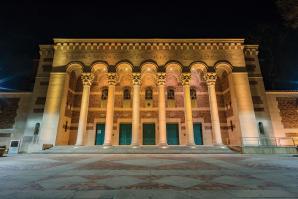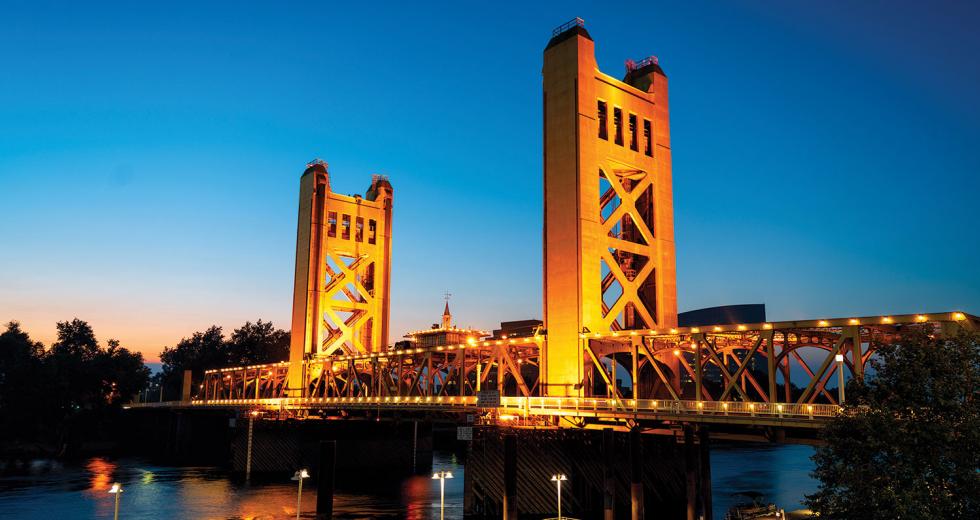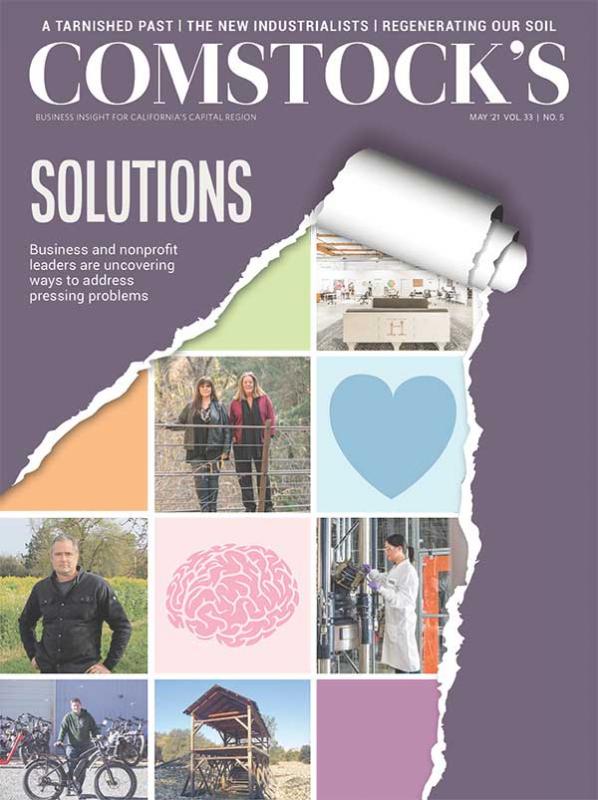Cynthia Larsen is a litigation attorney who’s been with the Orrick law firm since 1986. Its offices at 400 Capitol Mall overlook the Tower Bridge, whose 738-foot span across the Sacramento River connects Sacramento to West Sacramento. Larsen says when the bridge’s color changed from a tired ocher to its vibrant gold in 2002, “I loved it. It went from being something I took for granted to something I enjoyed looking at every day. So enchanting.”
Bruce Monighan, urban design manager for the City of Sacramento, remembers his first sight of the Tower Bridge when he’d visit here from the Bay Area in the summer as a kid (he’s now in his early 70s). “After hours of traveling and countless times of asking ‘Are we there yet?’ we’d spot the Tower Bridge sticking up … in the flat landscape. This was before we had a lot of tall buildings in the city, and the view of the then-silver bridge meant we were there finally. As we looped into the bridge entry, we could spy the Capitol across the river, and that was the moment we knew we were in the state capital,” he says. “It’s crazy, but almost 60 years later, I still get that throwback moment when I cross that bridge.”
Maintaining this local landmark, which opened in 1935, is the responsibility of the California Department of Transportation. Caltrans’ Erol Kaslan says the Tower Bridge (officially California State Highway 275) is “our shortest state highway, from one side of the river to the other, not even 740 feet.” That may be shorter than Kaslan’s official title: chief of structure investigations, north, for the Office of Structure Maintenance and Investigations in the Caltrans Division of Maintenance.
Given the public squawks when Caltrans painted the bridge its current color in 2002 — even though the color was selected in a survey of residents within a 35-mile radius — it may be a surprise to learn that in 86 years, it’s been painted only three times. This is in marked contrast to the maintenance schedule of another iconic California bridge, the Golden Gate, which is continuously being painted as part of its maintenance. “Our weather in Sacramento is a lot less harsh than in the Bay Area,” Kaslan says. Apparently, that refreshing ocean air also plays havoc with the paint, whereas what he calls the “iridescence” of the Tower Bridge’s finish withstands the valley’s rainy seasons and dry summers.
The Tower Bridge’s dedication ceremony on Dec. 15, 1935,
attracted a large crowd who witnessed the first raising of its
lift span. (Photo courtesy of the Sacramento History Museum)

It takes a village to care for a bridge. Maintenance of the Tower Bridge “is truly a team effort,” says Kaslan. “It involves many disciplines — including bridge operators, field maintenance crews, bridge structure engineers, and specialized mechanical and electrical engineers.” Kaslan’s office provides engineering-related inspection and support functions.
Monighan says the Tower Bridge was built to replace the M Street Bridge. “Both the I Street Bridge and the M Street Bridge were about (getting) trains over the river, with cars being a secondary thought. The transcontinental highway system was an important strategic transportation system … and the M Street Bridge was deemed insufficient to (accommodate cars), and the new Tower Bridge was proposed. It was a much grander bridge than the I Street Bridge and done in a deco design fashion, which was very much of the time.”
Though Kaslan points out that all mobile bridges are considered “drawbridges for some reason” — we tend to think of that term in regard to only the type of bridges that open in the middle, with both sides of the road raising vertically — the Tower Bridge was one of the earlier lift bridges, where the center section lifts vertically to allow for boats to pass beneath. The nearby I Street Bridge uses a swing section that moves horizontally.
In case you’re planning to sail into Sacramento on your life-size replica of the Royal Caribbean’s Symphony of the Seas (the world’s largest cruise ship at 238 feet tall), you should know the vertical clearance of the Tower Bridge, when it’s fully open, is only 96 feet from the surface of the average high-water elevation of the Sacramento River. Kaslan says the width of a craft is equally critical: “Any vessel more than 170 feet wide can’t pass through the navigational opening at Tower Bridge.”
As an engineer, Kaslan cares about the nuts and bolts of the Tower Bridge, but he also appreciates its beauty.
“Whenever I have out-of-town visitors, I take them out for lunch along the waterfront with the Tower Bridge in sight,” he says. “The iconic art deco architecture is beautiful, and the bridge defines Sacramento as the River City. As an engineer, I admire the bridge as being very well designed — and built like a Sherman tank.”
–
Stay up to date on business in the Capital Region: Subscribe to the Comstock’s newsletter today.
Recommended For You

The Back Story: Back to the Beginning
Tatyana Bak is leading Elica Health Centers’ growth as CEO 30 years after helping to launch a clinic
Tatyana Bak was 29 years old, an émigré from the city of Odessa
in what was then the Union of Soviet Socialist Republics, when in
1989 she helped open a medical clinic that eventually evolved
into Elica Health Centers.

The Back Story: Sacramento Memorial Auditorium
Ninety-three years after opening, it’s ready for the future
While chronologically a relic, the Sacramento Memorial Auditorium
is anything but a fossil.

The Back Story: A True Utility Player
SMUD has become more than just a public utility
The Sacramento Municipal Utility District, which has served the
community for nearly 75 years, also became a social
services organization in 2018.

The Back Story: A Family’s Legacy
The Crocker Art Museum dates to the purchase of the site by E.B. Crocker more than 150 years ago
From its official opening in 1885, the Crocker Art Museum (then
known as the E.B. Crocker Gallery) has had a split
personality.





Comments
how many times lifted each year? busiest months? hope I didn't miss it ....